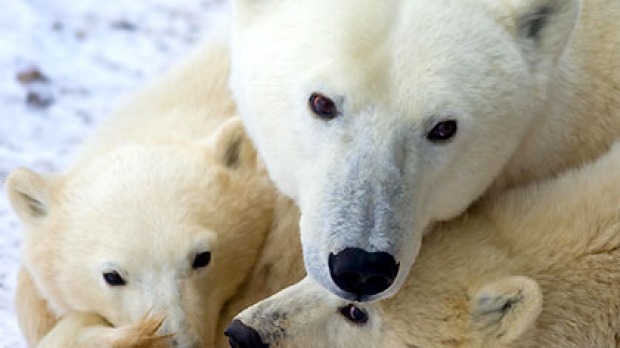
Tracking endangered wildlife in politically troubled, impoverished Zimbabwe might not seem the ideal holiday spot but it's in hot demand in the travel industry's latest niche market -- "tourism of doom".
The term was coined by sector specialists for the growing number of travelers flocking to far-flung corners of the planet to see endangered natural wonders before they disappear.
Ken Shapiro, the editor of TravelAge West, a magazine for travel agents, said the destinations can be melting glaciers, shrinking tropical rain forests or other places these travelers believe will be destroyed in a generation due to climate change, overbuilding or other threats to the environment.
"People are traveling to places because they really are convinced that it is going to change and they want to see it before that change happens," he told AFP, saying the trend was first spotted about two years ago.
"We see that a lot now, it has actually become much more mainstream."
Shapiro said travel agents report that clients are increasingly requesting trips to see the melting glaciers of the Antarctic, the threatened coral of Australia's Great Barrier Reef or Tanzania's Mount Kilimanjaro before it loses its ice cap.
Ross Kennedy, the president of Africa Albida Tourism which took part in the five-day FITUR travel fair that wrapped up on Sunday in Madrid, says the trend towards environmental awareness in travel is boosting business.
"The changing environment that the world is facing does have some relevancy and some people think: 'We have to get this done'," he said.
This logic is partly responsible for a rise in the number of foreign visitors to Africa Albida's safari lodges in Zimbabwe, where the firm operates properties near Victoria Falls, the largest waterfall in the world. The site is well suited as a starting point for safaris along the Zambezi River on Zimbabwe's northern border to see endangered wildlife.
Despite concerns over political unrest, staggering inflation, shortages and a cholera outbreak in Zimbabwe, the company posted a four percent rise in visitors in 2008, Kennedy said.
-- 'Antarctica blows your mind' --
The US market -- Africa Albida Tourism's main source of overseas guests -- accounted for 4,035 room stays at its properties last year, a nearly three-fold increase over 2004, he added.
The popularity of visits to the melting glaciers in the Antarctic has also soared so much that cruises must now be reserved well in advance, Shapiro said.
According to the International Association of Antarctic Tour Operators, slightly more than 46,000 tourists visited the continent during the 2007-08 tourist season -- more than double the number five seasons ago.
About a third came from the United States while the second largest contingent -- one in six visitors -- travelled from Britain, according to data posted on the body's website.
Juan Kratzmaier, a Barcelona-based Argentinian who has accompanied tourists on more than 30 visits to the southernmost continent, said cruise ship operators have increased the number of their trips to Antarctica in response to the demand.
"Antarctica blows your mind with its vastness, its isolation, its pureness and its unique wildlife of countless penguins, seals, birds and whales," the 38-year-old said.
The safaris and Antarctic cruises are not for everyone, however, with price tags that can up to thousands of dollars per person.
"Tourism of doom" is even bringing travelers to remote corners like the town of Churchill in northern Canada, the so-called "Polar Bear Capital of the World", in significant numbers for the first time ever, said Shapiro.
Scores of tour operators have sprung up in recent years in the town to guide visitors on trips to view polar bears -- now considered endangered because of shrinking sea ice -- in the wild from the safety of specially modified buses known as "tundra buggies".
"The only reason why Churchill is on the tourist map is because of polar bears," said Shapiro.
AFP